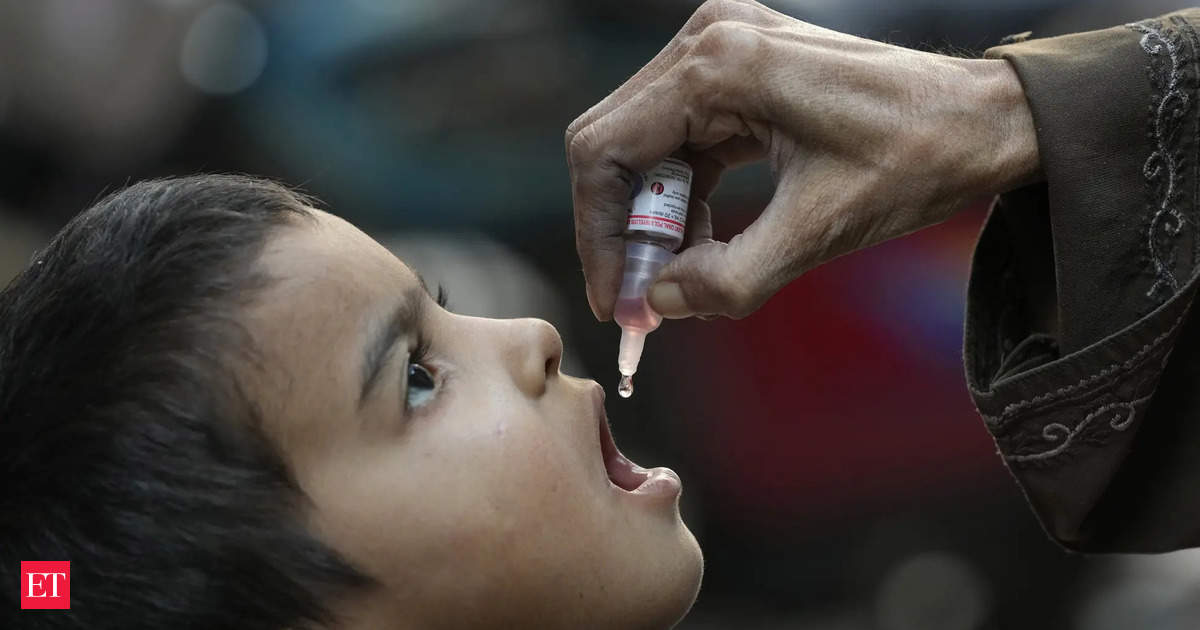What is polio?
Polio is an infection caused by a virus that primarily affects children under 5 years old. Most people infected with polio have no symptoms, but it can cause fever, headaches, vomiting and stiffness of the spine. In severe cases, polio can invade the nervous system and cause paralysis within hours, according to the WHO. The UN agency estimates that 1 in 200 cases of polio results in permanent paralysis, usually of the legs. Among children who become paralyzed, up to 10% die when their breathing muscles become paralyzed.
The virus is transmitted from person to person, entering the body through the mouth. It is most often transmitted through contact with waste from an infected person or, less frequently, through contaminated water or food.
How serious was polio in the past?
Very bad. Polio has been around for centuries; ancient Egyptian hieroglyphics show children walking with sticks, with the weakened limbs characteristic of polio victims.
Before the first vaccine was developed in the 1950s, polio was one of the most feared diseases. An explosive outbreak in New York in 1916 killed more than 2,000 people, and the worst outbreak on record in the United States in 1952 killed more than 3,000. Many people who survived polio suffered lifelong consequences, including paralysis and limb deformity. Some people whose respiratory muscles were paralyzed required “iron lung” chambers to be able to breathe.
When did the eradication campaign begin?
WHO passed a resolution to eradicate polio in 1988, spurred by the success achieved eight years earlier in eliminating smallpox. Its original goal was to eliminate polio by the year 2000. WHO, together with partners such as the US Centers for Disease Control and Prevention, UNICEF and Rotary International promoted the production of an oral vaccine and launched widespread immunization campaigns. Polio cases were reduced by more than 99%. Afghanistan and Pakistan They are the only countries where the spread of polio has never been stopped. There are also outbreaks in more than a dozen other countries, mainly in Africa. WHO and its partners now aim to eradicate polio by 2026. Why did it take so long?
It is extraordinarily difficult. Stopping polio outbreaks means vaccinating at least 95% of the population everywhere, including in conflict-ridden countries and poor regions with weak health systems and other priorities.
The oral vaccine is cheap, easy to use, and better at preventing infection of entire populations, but it contains weakened live polio viruses and in very rare cases can spread and cause polio in unvaccinated people. In even rarer cases, the live virus in the vaccine can mutate into a new form capable of starting new outbreaks.
Health authorities have been more successful in reducing the number of cases caused by the wild polio virus. Vaccine-related cases are now the cause of most infections worldwide.
“The problem with trying to eradicate polio is that the need for perfection is so great and there are so many weak points,” said Scott Barrett, a professor at Columbia University who has studied polio eradication. “The technical feasibility is there, but we live in a hugely imperfect world.”
Disclaimer:
The information contained in this post is for general information purposes only. We make no representations or warranties of any kind, express or implied, about the completeness, accuracy, reliability, suitability or availability with respect to the website or the information, products, services, or related graphics contained on the post for any purpose.
We respect the intellectual property rights of content creators. If you are the owner of any material featured on our website and have concerns about its use, please contact us. We are committed to addressing any copyright issues promptly and will remove any material within 2 days of receiving a request from the rightful owner.

